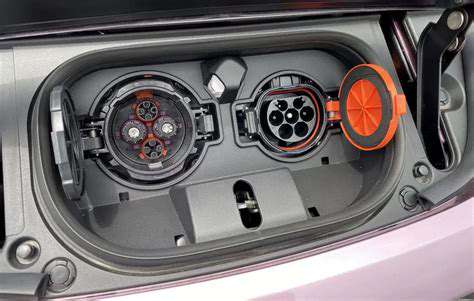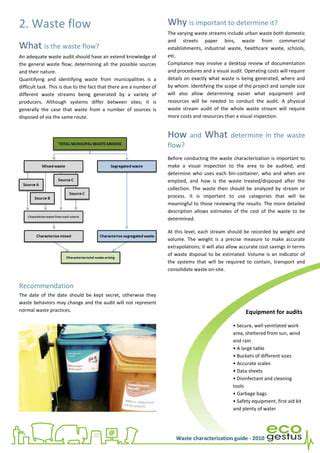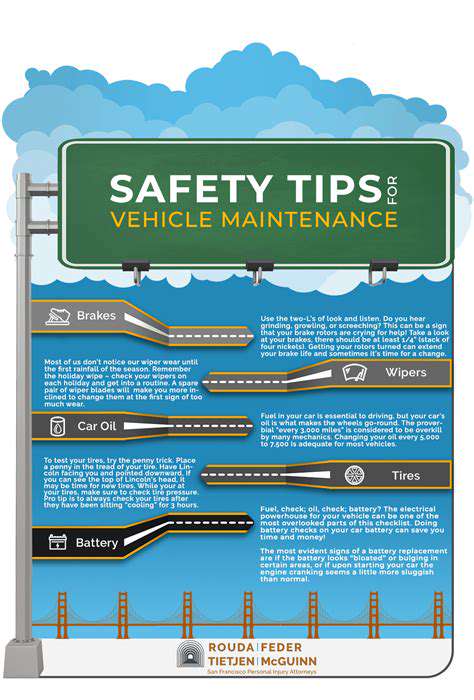Signs of Trouble: Identifying Low or Contaminated Power Steering Fluid
Low Power Steering Fluid
Low power steering fluid levels can be a serious issue for your vehicle. It's crucial to regularly check your power steering fluid reservoir, ensuring it's filled to the proper level indicated on the reservoir's markings. Low fluid levels can lead to a variety of problems, including a loss of power steering assistance, making steering significantly harder and potentially causing damage to the steering system components. This increased effort required to steer can be particularly noticeable when turning or maneuvering in tight spaces. Regular checks and timely fluid replenishment are essential for maintaining proper steering function and preventing more significant issues.
A visual inspection of the reservoir is a simple but effective way to detect low fluid levels. If you notice the fluid level is significantly below the minimum mark, you should immediately add the correct type of power steering fluid specified in your vehicle's owner's manual. Using the incorrect type of fluid can have detrimental effects on the steering system and could potentially void any warranties related to the components.
Contaminated Power Steering Fluid
Power steering fluid, if not properly maintained, can become contaminated over time. Contamination can stem from various sources, including leaks from other parts of the vehicle's engine system, or even the ingress of dirt and debris. Contaminated fluid can lead to diminished steering performance, causing the steering to feel rough, gritty, or even noisy. This is often accompanied by a noticeable reduction in the steering's assistance, making it much more difficult to steer and potentially leading to damage to the steering components.
Signs of contamination often manifest as a change in the fluid's color or appearance. If you notice the fluid has become dark, milky, or contains visible particles, it's a strong indication of contamination. Promptly addressing this issue is vital to prevent further damage to the power steering system. Replacing the contaminated fluid with fresh, clean fluid is often the recommended course of action, ensuring the system functions optimally.
Other Indicators of Trouble
In addition to low or contaminated fluid, there are other warning signs that could indicate potential problems with your power steering system. These include unusual noises from the steering system, such as grinding, squealing, or whining sounds. Any unusual noise during steering operation should be immediately investigated to prevent potential costly repairs down the line. These noises often signal internal component wear or damage that can worsen if left unchecked. Remember, early detection and intervention are key to maintaining your vehicle's power steering system in optimal condition.
A significant loss of power steering assistance, requiring a noticeably greater effort to turn the steering wheel, is another red flag. This could be a symptom of several issues, including low fluid levels or internal component problems. Driving with significantly reduced power steering assistance can place extra strain on the driver and potentially lead to accidents. Always address these symptoms promptly to ensure the safety and longevity of your vehicle's power steering system.
If you experience any of these issues, it's best to consult a qualified mechanic for diagnosis and repair. Ignoring these signs can lead to more extensive and expensive repairs in the future. Professional inspection and maintenance are crucial for maintaining the overall performance and safety of your vehicle.
Beyond the Basics: The Role of Proper Fluid Type and Maintenance
Choosing the Right Font
Selecting the appropriate typeface is crucial for readability and aesthetic appeal. Consider the intended audience and the overall message. A serif font, with its small decorative strokes, can be excellent for body text, promoting a sense of tradition and formality. Sans-serif fonts, on the other hand, are often more modern and clean, suitable for headlines and titles. Experiment with different fonts to find the best combination for your project, keeping in mind that the font choice should support, rather than detract from, the content.
Font size is equally important. It should be large enough to be easily legible, but not so large that it overwhelms the layout. Consider the context and the medium. A website font size may need to be larger than a print publication to account for the distance the reader is from the screen. Proper font size ensures that readers can comfortably absorb the information without straining their eyes.
Font Size and Line Spacing
Maintaining appropriate font sizes and line spacing is paramount to ensuring readability. Large font sizes can overwhelm a page, while excessively small sizes can strain the reader's eyes. The optimal font size should be large enough to be easily recognized at the typical reading distance, yet not so large as to create visual clutter. Line spacing, or leading, influences the overall visual appeal and readability of the text. Too little spacing can make the text appear cramped and difficult to follow, while excessive spacing can lead to a less engaging experience.
Font Weight and Style
Font weight, encompassing bold, light, or italic styles, significantly impacts the visual hierarchy and emphasis of text. Using bold text for important information, such as headings or key terms, helps direct the reader's attention. Conversely, using light or italic styles for less critical information can create a visual hierarchy that is clear and easy to digest. The use of font styles should be deliberate and not overused, as overuse can diminish the impact of these stylistic choices.
Understanding Kerning and Tracking
Kerning and tracking are essential typographic adjustments that fine-tune the spacing between individual characters and the overall spacing between groups of characters. Kerning focuses on adjusting the spacing between specific letter pairs, ensuring optimal visual harmony and legibility. Tracking, on the other hand, manages the spacing between all characters in a block of text, affecting the overall density and visual impact. Understanding these nuances can dramatically enhance the aesthetic appeal and readability of your text.
Maintenance of Fluid Typography
Proper fluid typography involves adapting font sizes and line heights to different screen sizes and contexts. This adaptability ensures that the text remains legible and visually appealing regardless of the device or viewing conditions. A well-designed fluid typography system is responsive to various screen resolutions, preventing text from becoming too small or too large, and ensuring an optimal reading experience on different devices. Tools and software can aid in this process, allowing for efficient adjustment and maintenance.
Regular Updates and Checks
Regular maintenance is key to ensuring that fluid typography remains effective. As screen sizes and technologies evolve, the optimal settings for readability may need adjustments. Checking and updating typography regularly is crucial for maintaining clarity and aesthetic appeal. This may involve periodic reviews, testing on various devices, and adjustments to the typography settings. Regular checks ensure that the text remains easy to read across different platforms and devices.
Considering Accessibility
Accessibility is an important consideration when designing with typography. Ensure that the font choices and settings are usable for individuals with visual impairments. Using sufficient contrast between text and background, and providing alternatives for different reading styles are key aspects of accessibility. Employing tools to test for accessibility ensures that the typography is usable for all users. This includes considerations for screen readers and other assistive technologies.
Safety First: How Power Steering Issues Impact Driving
Understanding Power Steering Malfunctions
Power steering systems are crucial for making driving easier, especially in challenging conditions. Understanding how these systems work and the potential issues that can arise is essential for safe driving. A malfunctioning power steering system can lead to a significant increase in the effort required to turn the steering wheel, potentially impacting control and maneuverability, especially at higher speeds or when encountering obstacles. Recognizing the signs of a problem is the first step in preventing serious accidents and ensuring the safety of yourself and others on the road.
Power steering systems rely on hydraulic pressure to assist the driver in turning the vehicle's wheels. If there's a leak in the fluid lines, a malfunction in the pump, or a problem with the steering gear, it can significantly reduce or eliminate the power assistance. This can make steering sluggish, heavy, or even unresponsive, requiring excessive physical effort from the driver.
Consequences of Ignoring Power Steering Problems
Ignoring power steering issues can lead to a cascade of negative consequences. The increased physical strain on the driver's arms and shoulders can lead to fatigue and reduced alertness behind the wheel. This decreased control over the steering wheel can make it difficult to navigate corners safely, potentially leading to collisions or loss of control.
Furthermore, a persistent power steering problem can put unnecessary stress on other vehicle components. The increased effort required to turn the steering wheel can strain the steering system itself, potentially leading to more significant and expensive repairs down the line. Ignoring a problem can also lead to a complete failure of the steering system, making it impossible to control the vehicle, resulting in potentially dangerous situations.
Preventive Measures to Maintain Power Steering
Regular maintenance plays a vital role in preventing power steering problems. Checking the power steering fluid levels and ensuring they are within the recommended range is crucial. A low fluid level can significantly impact the hydraulic system's ability to function properly. Regular inspections for leaks are also essential to detect and address potential issues early on, thereby avoiding larger problems down the road. Keeping the vehicle's fluid levels at the optimal level and performing regular checks can help maintain the efficiency and longevity of the power steering system.
Keeping a close eye on the steering wheel's feel during normal driving is a simple but effective way to catch potential problems early. If you notice any unusual resistance, heaviness, or unusual noises from the steering system, it's essential to have a mechanic investigate the issue promptly. Prompt attention to these indicators can prevent more severe and costly repairs in the future.
The Importance of Professional Inspection
While some minor checks can be done by the driver, diagnosing and repairing power steering issues often requires the expertise of a qualified mechanic. Professional inspections can identify underlying issues that might not be apparent during a simple visual check. Mechanics have the tools and experience to accurately assess the condition of the power steering system, pinpoint the source of any problems, and recommend the appropriate repairs.
Professional inspection is crucial for maintaining the safety and efficiency of the vehicle's power steering system. A mechanic can provide a comprehensive diagnosis, recommend appropriate repairs, and ensure that the system is functioning correctly, preventing potential safety hazards and costly repairs.











